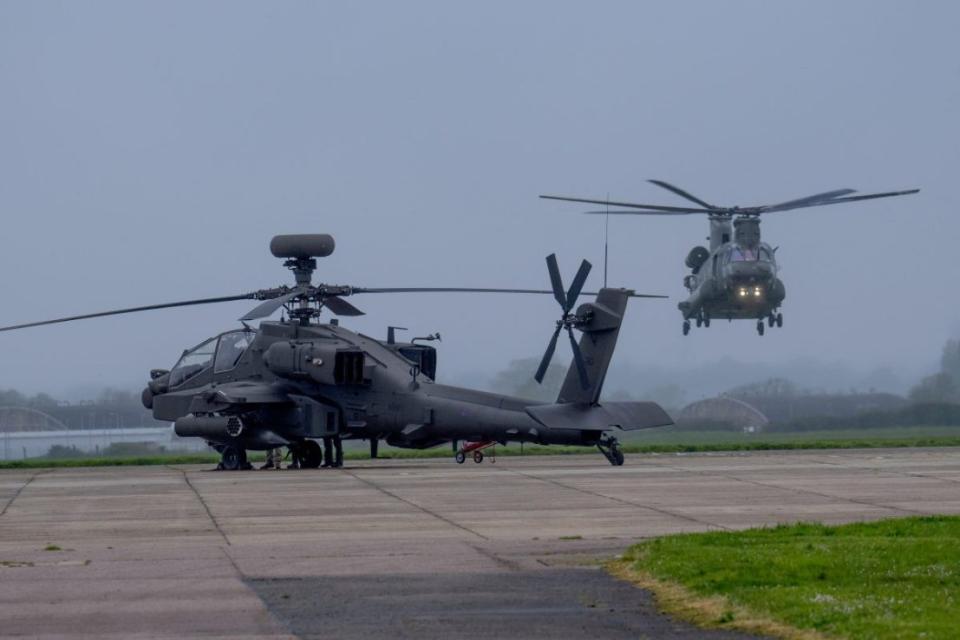Nato needs enhanced capabilities, not just more funding

Extra defence spending is welcome but not enough. Europe needs to be able to defend itself with a credible military capability within Nato, says Daniel Sleat
Ongoing wars in Ukraine, the Middle East and elsewhere continue to highlight the geopolitical volatility of the world we live in. The risk of escalation in any one of these hotspots is high with devastating implications for the region and the world. Meanwhile, technological advances continue to revolutionise the ways strategic decisions are made and wars are fought. In such turbulent times, strong alliances of like-minded partners are crucial to global peace and security. These alliances require the right funding, but, critically, also the right capabilities.
In 1949, in Washington DC, 11 European countries and the US signed the North Atlantic Treaty, giving birth to Nato. By any measure, Nato has been a success. Over the last 75 years, no Nato member (of which there are currently 32) has been attacked by the USSR; the founding purpose of the organisation. The alliance has been central to the extended period of peace Europe has enjoyed since the end of the Second World War.
This, the 75th anniversary of Nato, is a moment to celebrate. Its achievements would have felt like the highest aspirations fulfilled to those who signed the treaty in 1949. But it is also a chance to reassess Nato’s capabilities and role for now and the next 75 years.
Former US president Donald Trump’s recent statements about the US’s role in Nato should not be taken at face value but they raise questions about the long-standing bipartisan consensus on support for Nato in America. This has caused concern but should instead be seized upon to reset Nato for a new era. This renewal should be in terms not just of spending but also capabilities, especially when it comes to the role of technology. Europe should drive this renewal. After all, it is the European continent that finds itself on the frontline of the new era of conflict in Ukraine.
We are going through a period in which only the super superpowers – the US and China – currently have the ability to project themselves with full spectrum capability militarily. Together, these two countries spend more on defence than the next 38 highest spending countries combined, leaving Nato increasingly reliant on the US for its capability. And leaving Nato’s European members increasingly under the spotlight to spend more and build their capability to cover their own defence requirements.
It would be easy to conclude from all of this that the problem Nato – specifically European members – needs to fix is one of spending. The UK Government, for example, attempted to address this point this week, committing to spending 2.5 per cent of GDP on defence by 2030. But the current over-reliance on the US means Nato needs increased capabilities, not simply increased spending. The catalyst for a changing US role could come in different forms: by choice, or, with the risk of increased tensions with China, by necessity. This leaves Europe in a position where it, quite quickly, needs to be able to defend itself and establish a credible military capability within the framework of Nato.
Nowhere is this challenge more acute, nor alive, than in Ukraine. The US’s major proposed funding package has cleared its final hurdle in the Senate, after months of wrangling. This will come as a boost at a difficult time for Ukraine, whose major counteroffensive last year failed to meet its main objectives and now faces a Russia increasingly geared up domestically around the war effort. With faltering international support, Russian troops are advancing on parts of the frontline. Ukraine is becoming the case study for how Europe needs, urgently, to better defend the continent.
A new coordinated approach to the UK and continental European security requires moving defence increasingly away from being seen as a national concern into one of collective European strategy. The war in Ukraine is highlighting the evolving mixture of new technology and traditional capabilities needed to fight modern warfare. The only way Europe will be able to fight this type of warfare without the US is not simply to spend more, but to spend collectively with coordination on the capabilities needed. On paper European Union member states and the UK have a military force of around two million personnel. But the ability of these forces to interact and work together remains severely limited.
Interoperability and complementarity are required in capabilities, personnel and procurement. Again, the evolution of technology, the changing nature of military capabilities, for example the emergence of drone warfare, and the speed of procurement needed in modern conflict is being demonstrated daily in Ukraine and the Middle East. Learning from these lessons would see Europe spend better, spend smarter and spend together.
Doing this will have two important consequences. First, and foremost, it will put Europe in a position to better protect its own security interests without reliance on other allies. Second, by reforming in this way Europe will make itself a more compelling partner to allies like the US, not just in Ukraine but in future tensions further afield.
Nato’s future depends on it meeting the threats of a new world with renewal, and that renewal must come from Europe. Ukraine will depend on it but, long term, so will all of our security.
Daniel Sleat is senior policy advisor at the Tony Blair Institute

 Yahoo Finance
Yahoo Finance 